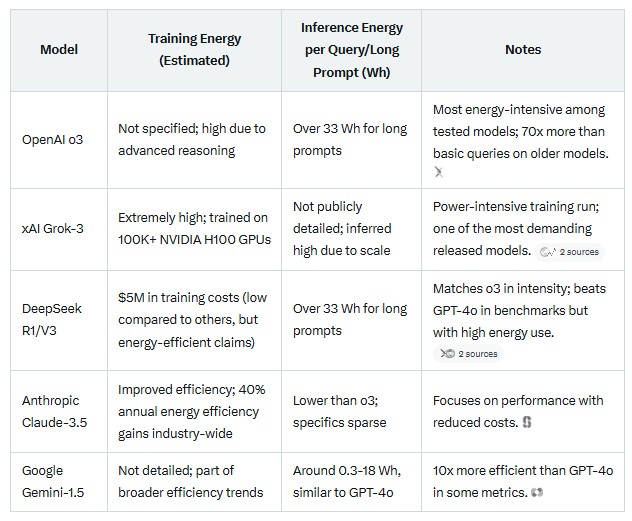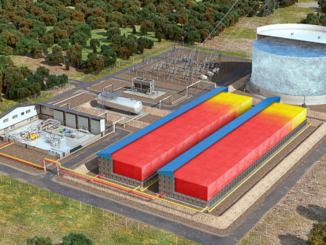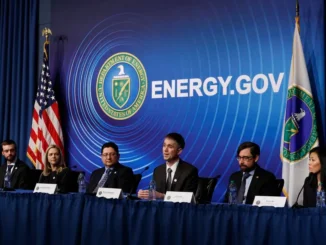
The rapid evolution of artificial intelligence (AI) is transforming industries, but it’s also raising alarms about its escalating energy demands. OpenAI’s ChatGPT, one of the most widely used AI chatbots, exemplifies this trend. As models grow more sophisticated, their power consumption surges, prompting questions about sustainability and the broader energy landscape. In this article, we’ll dive into the energy footprint of ChatGPT’s newest model—potentially GPT-5—based on recent estimates, and compare it to the top five AI models, including xAI’s Grok, DeepSeek’s offerings, and others. We’ll also break down AI-related energy consumption by country and examine the boom in data center construction across U.S. states.
Energy Consumption of ChatGPT’s Newest Model
OpenAI’s latest iteration of ChatGPT, estimated to be GPT-5, represents a leap in capability but at a steep energy cost. Researchers estimate that generating a medium-length response (around 1,000 tokens) consumes about 18 watt-hours (Wh) of electricity, with some queries spiking to 40 Wh.
This is up to 20 times more than the first version of ChatGPT, which used roughly 2 Wh per query in 2023.
For context, a typical query on the older GPT-4o model uses just 0.3 Wh.
Sam Altman, OpenAI’s CEO, has claimed that ChatGPT consumes 0.34 Wh per query, but this figure lacks independent verification and specifics on the model version.
The lack of transparency is a recurring issue; 84% of large language model (LLM) traffic occurs on models with zero environmental disclosures.
This opacity contributes to broader concerns, including rising electricity costs for consumers as data centers expand, potentially leading to a “massive transfer of wealth” from households to tech giants.
Projections suggest that if AI adoption continues, energy demands could exacerbate affordability crises, with calls for regulations mandating full disclosure of environmental impacts.
Energy Use of the Top 5 AI Models

To put ChatGPT in perspective, let’s compare it to the top five leading AI models as of 2025: OpenAI’s o3 (a reasoning-focused variant), xAI’s Grok-3, DeepSeek’s R1 (or V3), Anthropic’s Claude-3.5, and Google’s Gemini-1.5. Energy consumption varies between training (one-time process) and inference (ongoing queries). Data is often estimates, as companies rarely disclose exact figures, but here’s a breakdown based on available research:
Overall, o3 and DeepSeek R1 stand out as the hungriest for inference, consuming over 33 Wh per long prompt—more than 70 times basic queries.
Training for models like Grok-3 is massively resource-intensive, with xAI’s efforts among the most power-hungry to date.
Industry-wide, AI training carbon emissions are rising, though efficiency improvements (40% annually) offer some mitigation.
AI Energy Consumption Breakdown by Country
AI’s energy appetite is global, with data centers projected to consume 945 terawatt-hours (TWh) worldwide by 2030—more than double today’s levels.
In 2022, global data center energy use was 240-340 TWh, but AI is accelerating growth.
By 2030, the U.S. and China will dominate, accounting for 80% of all data center electricity use.
United States: Projected to lead with massive growth; AI alone could match 22% of U.S. household electricity by 2030.
Data centers may hit 88 TWh annually for generative AI by 2030.
China: Rapid expansion; alongside the U.S., it drives the majority of global demand.
Other Regions: Europe and Asia-Pacific follow, with global AI data centers potentially using 200-400 TWh by 2030 (35-50% of total data center energy).
Latin America and the Caribbean could see AI demand 5% of regional electricity by 2035.
AI could claim up to 49% of data center power by late 2025.
Data Center Boom in the United States
The U.S. is ground zero for AI infrastructure, with power consumption expected to hit record highs in 2025-2026 due to data centers.
Demand from non-AI sources grows at 16% CAGR, but AI amplifies it.
The Department of Energy (DOE) has identified 16 federal sites for rapid AI data center development, including:
Idaho National Laboratory (Idaho)
Oak Ridge Reservation (Tennessee)
Paducah Gaseous Diffusion Plant (Kentucky)
Savannah River Site (South Carolina)
And others across states like Washington, New Mexico, and California.
Construction is booming in key states:
Virginia: Leads with 329 data centers; Northern Virginia is a hotspot for hyperscalers like Amazon and Google.
Texas: Major expansions, including Oracle and OpenAI’s 4.5 GW Stargate project.
Louisiana: Emerging with projects like a massive AI data center nicknamed Hyperion.
Wisconsin and Other Midwest States: Attracting hyperscalers like Meta and Microsoft.
States best positioned for the boom include Washington (strong renewable energy), followed by others like Texas and Virginia, due to grid capacity.
Federal initiatives aim to accelerate permitting for AI data centers and supporting infrastructure like high-voltage lines.
Conclusion: Balancing Innovation and Sustainability
AI’s energy demands, led by models like ChatGPT’s newest version, highlight the need for efficiency gains and transparency. As top models like Grok-3 and DeepSeek R1 push boundaries, global energy use skyrockets, with the U.S. and China at the forefront. In the U.S., states like Virginia and Texas are racing to build infrastructure, but this could strain grids and raise costs. Policymakers must prioritize sustainable growth to ensure AI’s benefits don’t come at an unsustainable price.
Is Oil & Gas Right for Your Portfolio?
Crude Oil, LNG, Jet Fuel price quote
ENB Top News
ENB
Energy Dashboard
ENB Podcast
ENB Substack






